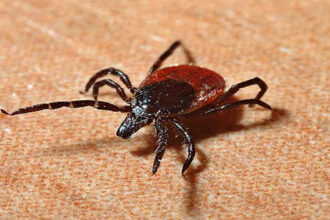Kiran Afzal
Rawalpindi Medical University
Without any warning, heart failure is going to hit you or anyone else around you. As you know, heart attack rates are increasing day by day because of poor diet, no exercise and a sedentary lifestyle, so the query is how you will get to know that he/she is having a cardiac arrest?
If you find a person collapsing in front of you then don’t get late and shift him to a safe place. Shout someone for help and call 911. Don’t waste a second as it is really precious for the dying one. Lie the patient down on the floor or earth and check for the airway.
- Advertisement -
Rule of ABC
Rule of A.B.C is
- Maintenance of Airway
- Set out Breathing
- Confirm Circulation.
.
Maintenance of Airway
As you make it sure that the air passage is open. For better rescue, put your one hand on his forehead and tilt it gently and lift the chin up with the two fingers of the other hand. Shortly, you’ll get to know if the person is breathing or not.
Set Out Breathing
Bring your ear near the mouth of the patient to check if the air is coming out of his/her mouth. You can also check if the patient is not raising his/her chest. If there is no response then give him/her two deep and full breaths. Take a break after one breath so that his/her lungs relax a bit. If the patient is not responding then check the circulation.
Confirm Circulation
Confirmation of circulation will acknowledge you that either the patient’s heart is beating or not. You need to put your two fingers on the carotid artery that lies in between the muscles of neck and trachea.Place your fingers on it for 20-25 seconds.
Chest Compressions
The most important part when you are rescuing the cardiac arrest patient, If the patient is not breathing and has no circulation then interlace your left hand with your right hand and press down placing the heel of your hand exactly where the heart is located.
- Give consecutive 30 compression in a rhythm with 2 breaths.
- You must be above at 90 degrees to a lying patient.
- The depth of compressions must be 2 inches.
For Infants
Basic rules are the same for both adults and infants except the placement of hands and the depth of compression.
- Lie the baby down straight on the floor.
- Sit at the baby’s feet side.
- Now put the thumbs of your both hands on the chest of the baby as exactly below the nipple line.
- The rate of compressions must be 100 to 120 per minute and the depth is 1.5inches.
- Do not forget to follow the rhythm like heartbeats.
Why is CPR given?
CPR is given to those patients who show no response in case of any trauma like an almost drowned man or heart failure etc. When a heart attack hits a person, he/she stops breathing. As there is no exchange of gasses occurring in the body, the cells and tissues start to die. So the maintenance of the airway is prior to other steps, If the victim gets CPR in 4 minutes and hospital care in 10 minutes then the survival chances are 40 percent.
AED
An Automated External Defibrillator (AED) is a medical tool used to evaluate the rhythm of heartbeat. Mostly used in case of a person having cardiac arrest. As it gives electric shock to aid the heart in the re-establishment of effective rhythm of heart.
Here are few steps for effective use of AED
- First of all, you have to turn the AED machine ON.
- Check the pads of AED, if one of the pads is already connected with it then place the other on the chest of the person and get the rhythm of the heart.
- If the pad is not attached then plug in first and then place the other one on the chest
After analysis, the machine itself will command you for “Shock Advised” or “No Shock Advised”.
Now there are two kind of AED machines
- Semi-Automatic Machine
- Fully Automatic Machine
Semi Automatic Machine
In this type of AED machine, you have to push the “Shock” button physically. Once the machine will get fully charged up then give the shock.
Fully Automatic Machine
In Fully Automatic Machine, after completion of countdown, shock will be delivered to the patient. After the shock, if there is a life sign in the patient then the machine will automatically command for “NO Shock Advised”. Give a few compressions and check the pulse of the patient.
NOTE: As AED pads are specialized for infants and adults, If there is no infants pad then you can use the large one as use for adults.











